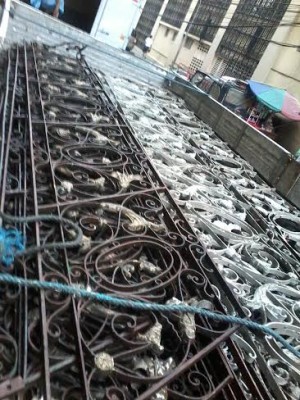
HERITAGE advocates have criticized the new owner of El Hogar in Binondo, Manila, for attempting to demolish the iconic 100-year-old building ostensibly because it was “unsafe in case of an earthquake.”
They said that the building, a presumed important cultural property for being at least 50 years old based on the National Heritage Act of 2009, could be retrofitted and structurally strengthened.
“Depending on who does the structural study, the results can always be slanted towards what is favorable to the client,” said architect Dominic Galicia, head of the Philippine branch of the International Committee on Monuments and Sites (Icomos) under the United Nations Educational, Science and Cultural Organization (Unesco).
“The point here is that the building can always be structurally retrofitted.”
The National Historical Commission of the Philippines (NHCP) issued a cease and desist order against the demolition on July 7, a day after heritage advocates reported that the exquisite grillwork of the building had been dismantled and hauled aboard a truck with the initials of New Golden City Builder (NGCB), the developer.
“The architectural details and parts, which could be part of the building’s beautiful staircase, were seen being loaded to trucks for some unknown destination. We are fearful that demolition works have begun and the imminent danger of losing this precious heritage building is now a reality,” said heritage advocate Isidra Reyes.
Stephen John Pamorada, president of Heritage Conservation Society (HCS)-Youth, took photos of the demolition and contributed them for posting to Inquirer.Net and Coconuts online media agency.
It was later reported that the new owner of the building is Ritz Premiere Corporation, which said that the building has been assessed to be structurally deficient by NGCB.
But Bob Peralta, a Chinese-Filipino heritage advocate, said Ritz and NGCB are owned by the same person, businessman Manuel Sy.
“We can stop this,” Peralta said, as he urged public pressure on Sy and the government to stop the demolition and conserve El Hogar.
Process must be observed
In an interview with Inquirer Lifestyle, Galicia said El Hogar is “culturally significant” and a process must be followed if the new owner would like to tamper with it.
“Expert and respected structural engineering professionals are required to assess the structural integrity of El Hogar and, depending on the findings, expert and respected engineering professionals are required to rehabilitate and retrofit El Hogar.”
Galicia said alleged structural weakness is no excuse to tamper with, much less demolish, a heritage edifice.
“Was Manila Cathedral demolished when it was found structurally unstable a few years ago? No,” Galicia said. “Expert and respected structural engineering professionals were hired to rehabilitate and retrofit it.”
Galicia, also a member of HCS, said Manila Cathedral is a “sacred trasure.” “A secular treasure like El Hogar,” he pointed out, “merits a similar respect.”
Galicia added that if Sy and Ritz Premiere aren’t willing to conserve the building, “we know of individuals and groups that are willing to purchase the property from them.”
“I appeal that they sell the property to people who are willing to restore the building,” he added.
Built in 1914 at the corner of Juan Luna Street and Muelle de Industria in Binondo, the four-story El Hogar was designed by Ramon Irureta-Goyena and Francisco Perez-Muñoz with elements of Neoclassical and Renaissance styles.
It has been described as airy and arcaded and it used to house the Sociedad El Hogar Filipino, a financing cooperative founded by Don Antonio Melian, and the offices of Smith Bell and Co. The building is, thus, a landmark in Philippine commercial history.
It survived World War II and is one of few remaining American-era and significant structures in that part of Manila.